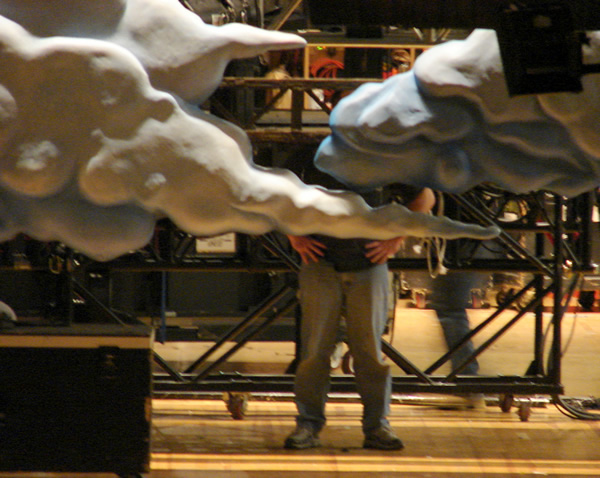Torah Sparks
Exodus 38:21 – 40:38
When opera lovers attend a Metropolitan Opera presentation in a movie theater they are reminded that they are missing the thrill of attending the performance in the flesh. The rush of experiencing a performance unmediated by a screen, as it happens in real time, is a special treat. Nevertheless, one of the compensatory pleasures that they get in the movie theater is the opportunity to witness the behind the scenes work of the stagehands, who must set up and take down the various stage elements between acts. There is a real dichotomy between the high drama of the music, singing and acting in front of the audience, as opposed to the very workmanlike, no-nonsense approach of the stage hands. Objects that radiate magic and wonder during the opera are, during the set-up, merely burdens to be shifted, attached, hauled, repaired and locked together.
We can notice something of the same difference when we compare our Torah reading, the final Torah portion of the book of Exodus, with the original Torah texts that it reviews. While it is commonly acknowledged that there is a great deal of repetition in the Torah’s descriptions of the planning and making of the Tabernacle, which this account concludes, we may note a subtle difference in the texts when we compare our Torah portion’s description of the making of the Tabernacle by the Israelites with the description of these same things as originally imagined by God.
For example, when God talks about making the priestly breastplate, we read:
“And they shall attach the breastplate through its rings to the rings of the ephod with a blue thread, to lie upon the design of the ephod, and the breastplate shall not slip from the ephod. And Aaron shall carry the names of the Children of Israel upon his heart when he enters the Holy [Chamber], as a remembrance before the Eternal, always.” (Ex. 28:28-29)
When we read about the Israelites actually putting this plan into effect, we read:
“And they attached the breastplate through its rings to the rings of the ephod with a blue thread so that it would lie upon the design of the ephod and the breastplate will not slip off the ephod, just as the Eternal had commanded Moses.” (Ex. 39:21)
These texts begin in almost identical fashion. So our Torah portion tells us that the Israelites are, indeed, following God’s instructions to the letter. They are excellent stage hands, scrupulously preparing the props for the performance. They know what is needed in order to make this prop work. But what is missing in our (second) text is any consideration of Aaron’s use of this prop, of how the prop will have to sit “on his heart” and serve as a “remembrance.”
Of course, in a sense, none of that stuff is any of the stage hands’ business. It is up to Aaron, and not them, to take these props to heart and infuse them with meaning. The stage hands are not preoccupied with matters of the heart. They are workers who are busy making sure their job gets done and everything is in its proper place and on time.
But Aaron’s kavannah – intention – does not simply arise from himself. It is first imagined and called for by the Eternal. The stage hands operate in a middle position, between two stages of heartfelt intention, the intentions of the Divine Designer, and the intentions of the human performer. The stage hands act as a bridge between those two holy realms of intention. They, in their prosaic dedication to getting the task done, and done right, are the “narrow bridge” connecting heaven and earth.
Shabbat Shalom
Rabbi David Greenstein
![]()
Subscribe to Rabbi Greenstein’s weekly d’var Torah
Image(s): “the feet of God…or at least God’s stagehand” © Danielle Blue used with permission via Creative Commons License
- Toby Stein: In Memoriam - Thu, Feb 8, 2024
- Faithfulness and Hope: Parashat Sh’lach - Thu, Jun 23, 2022
- Past Their Prime: Parashat B’ha`a lot’kha - Thu, Jun 16, 2022

